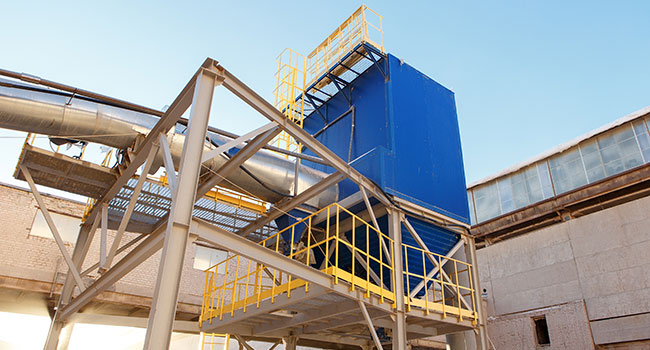
Using AI to Ensure Healthy Air in School Facilities A Key Measure to Mitigating the Spread of COVID-19 in Schools
- By Omar Tabba
- August 28, 2020
School re-openings are causing a great deal of concern for students and faculty across the nation. A recent article published by The New York Times highlighted this concern, stating that “many of the nation’s 3.5 million teachers found themselves feeling under siege […] as pressure from the White House, pediatricians and some parents to get back to physical classrooms intensified.” An entire movement promoting the hashtag #14daysnonewcases continues to trend on social media platforms as a form of protest to stop school reopenings. At the core of this protest resides the concerns teachers, paraprofessionals, cafeteria workers and bus drivers have regarding the safety of their students and themselves.
Regardless, it seems as though most schools across the United States have started to reopen. As such, school officials have been given the responsibility to adequately prepare facilities for the arrival of hundreds to thousands of students. Many measures are currently being worked on and implemented in schools across the nation, including the implementation of social distancing guidelines and signage, hand washing or disinfection stations, spreading out of desks and equipment, etc. One of the measures that cannot be omitted through the preparation process is ensuring the circulation of healthy and safe air throughout these educational facilities.
Why is Ensuring Healthy and Safe Air in Buildings Important?
The risks school officials will be facing are well described in an open letter to the World Health Organization regarding the airborne transmission of COVID-19 and the research and conclusions made by over 239 experts. The evidence they cite is significant and implies that the virus can be spread via aerosolization in indoor environments and get recirculated via the HVAC system.
The Centers for Disease Control (CDC) has made recommendations for what building owners can do to manage this risk. The CDC modeled its recommendations based on other airborne pathogen-based diseases and showed that a clear link exists between the time it takes to remove the pathogen from the air and the number of air changes per hour. The ability to maximize this flow is highly dependent on the pre-existing building equipment. However, for many buildings, it is possible to increase the flow beyond the 20% (likely) fresh air intake minimum and thus reduce the risk of pathogen propagation and airborne transmission. For example, increasing the air changes per hour in a building by a factor of 3 to 5 can reduce the time it takes to eliminate an airborne virus from the air by 60 to 80%.
How Can I Increase Air Circulation Within My Building?
Regardless of building type and age, owners of academic institutions need to start by working with the HVAC equipment and BMS (Building Management System) they already have in place. There is no time to rip and replace existing infrastructure and most systems in place right now can support increased air circulation. Simply increasing air changes per hour in a building is a good start. However, implementing a system that allows your building to not only increase air circulation but also adapt to the needs of your building as they change throughout the day/week/month, is also important.
This is where artificial intelligence (AI) steps in. AI can be used to automate this process and implement recommendations made by organizations such as the CDC and American Society of Heating, Refrigeration and Air-Conditioning Engineers (AHSRAE) more quickly and efficiently, while taking into consideration external variables such as weather, peak demand charges, presence of pollutants, varying occupancy rates, etc. In other words, AI can change its instructions to your HVAC equipment based on the number of students in a room, the time of day, changes in weather throughout the day, and more, all while ensuring a comfortable environment for your building occupants.
In addition, AI can not only help in mitigating the spread of pathogens but can simultaneously help in minimizing the energy consumption of the system — saving building owners money in a challenging environment. More specifically, the use of autonomous AI HVAC technology can save up to 25% in total energy costs and improve occupant comfort for staff and students alike by 60%, all without having expensive installation costs. As new safety preparations eat away at school budgets, these are important factors to consider.
Lastly, AI is a great solution to address a time-sensitive situation. Though there are many options and value-added changes that can be made to a building’s infrastructure to help fight COVID-19, the time-sensitivity of the crisis we are dealing with should play a big role in how decisions are made. High-impact, quick to deploy solutions should be prioritized so that buildings can provide their occupants with safe and healthy air NOW and do their part in the fight against the spread. AI does not require the installation of new HVAC equipment or sensors and can be up and running in less than a month.
Ensuring Clean and Safe Air is Only One Part of a Bigger Solution
Risk reduction is not binary; many measures need to be implemented to fight the virus and it is the result of those combined efforts that will ensure a clean and safe building. Proper fresh air management is key, but it is only one part of a broader solution. If we take a standard car as an example, the seatbelt, airbags, bumpers, and proximity sensors all combine for a much lower injury and mortality rate associated with driving. We believe a similar approach is needed across educational facilities and will result in much safer outcomes. It will literally save lives.